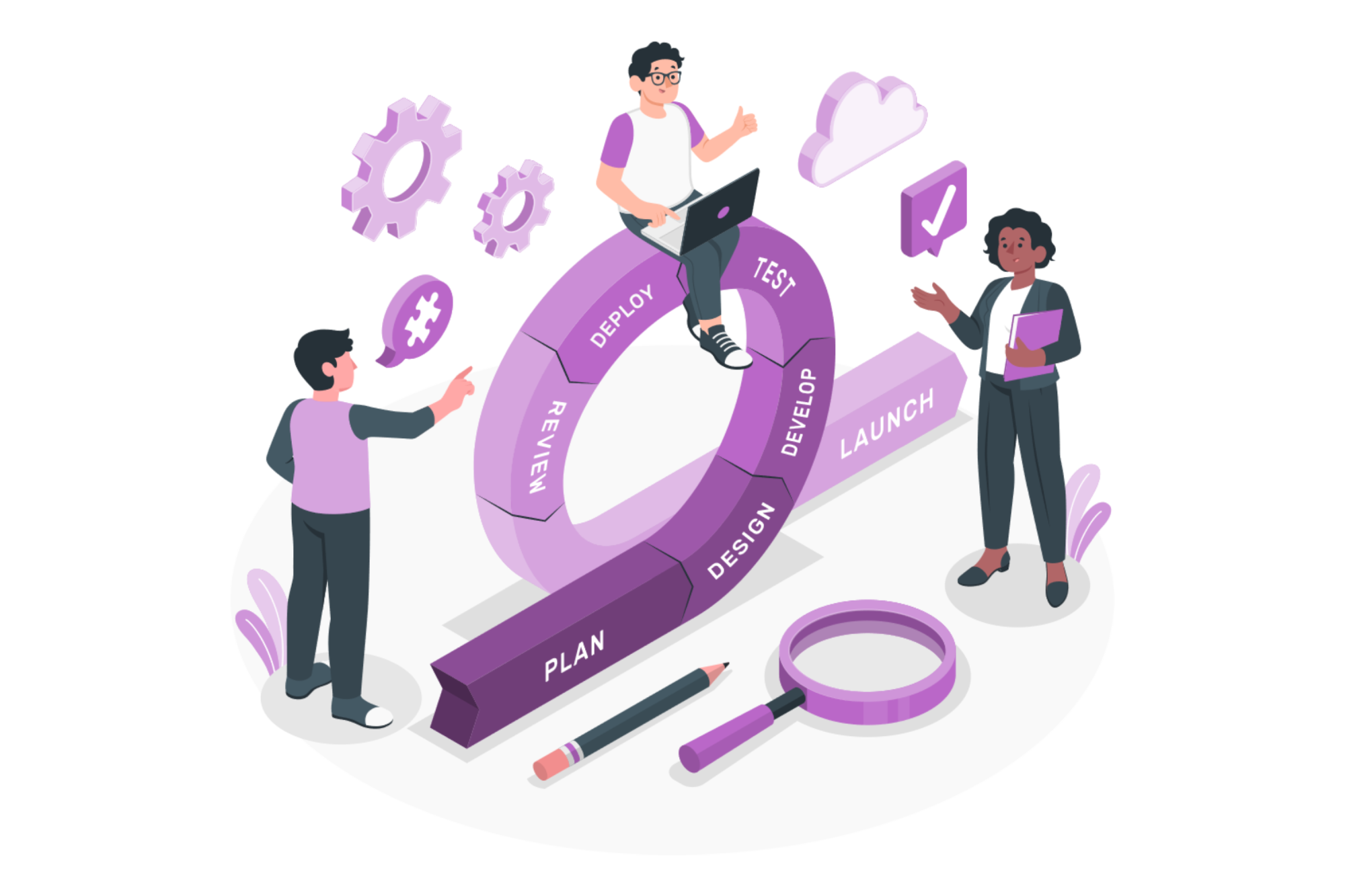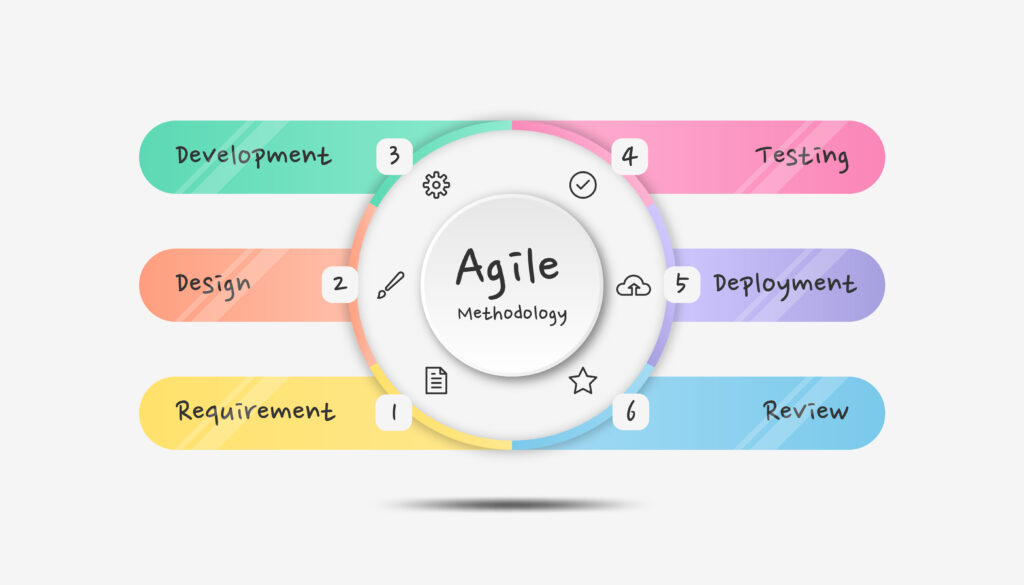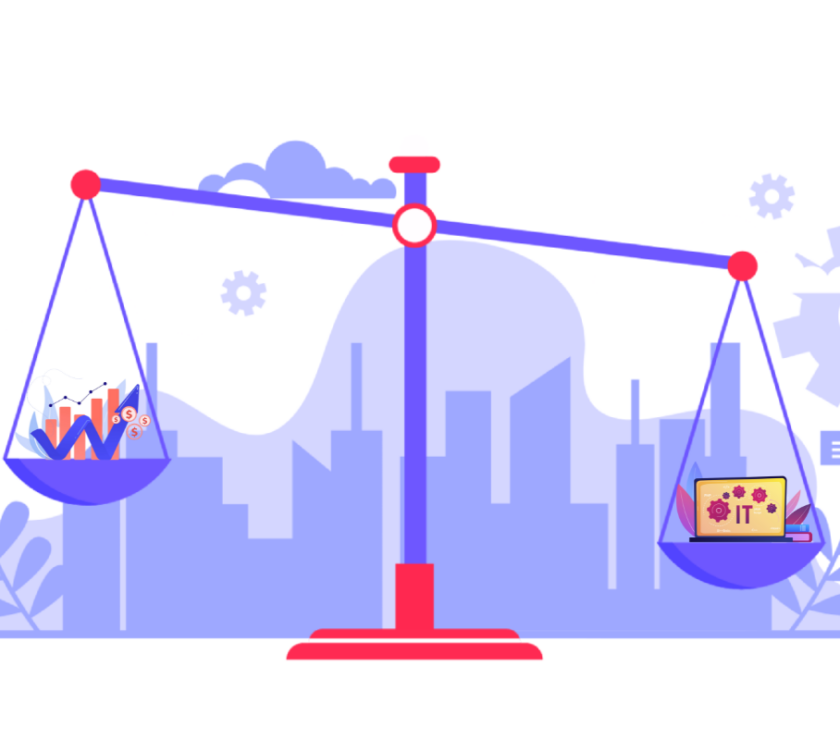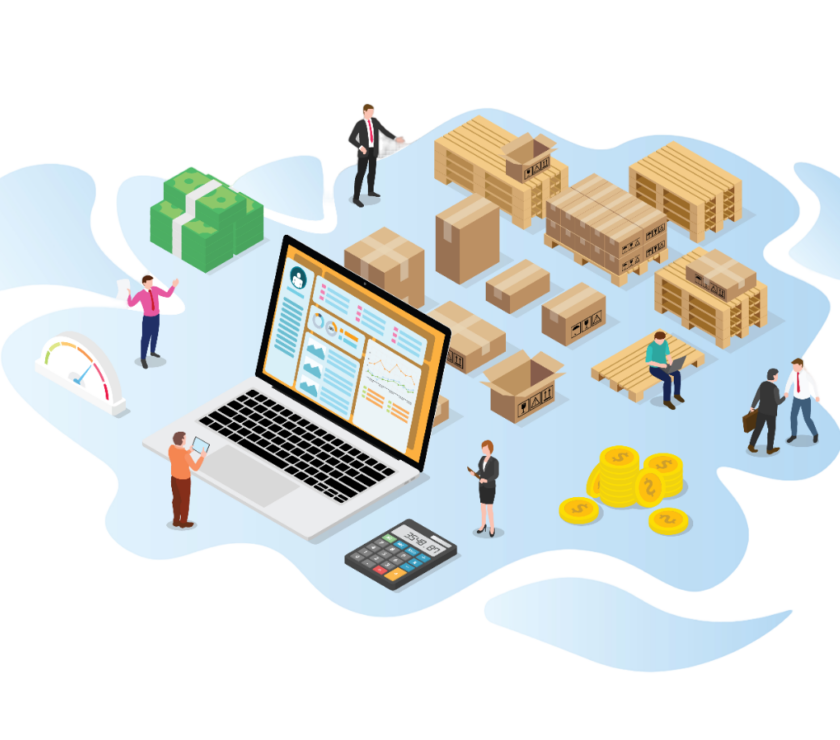The Secret to a Faster, More Efficient Business: Agile Methodology

Agile is a widely adopted project development methodology due to its adaptive and flexible nature. Originating from the Agile Manifesto in 2001, it was initially created for software development but has become a popular choice for project managers in various industries over the last 20 years.
What is The Agile Methodology?
In a nutshell, The Agile methodology outlines success standards and corporate objectives in manageable portions, with the project going through multiple cycles of creation, examination, and release. This method differs from the ‘waterfall’ approach, where the project is moved from development to release as a single continuous flow. The Agile technique creates continuous sets of important features and speeds up the product’s arrival to the end user.
This methodology, which revolves around customer collaboration and value delivery, is based on the following four values:
- Prioritising interactions and individuals over tools and processes
- Focusing more on working documentation than on comprehensive documentation
- Prioritising spontaneity over an inflexible plan
- Focusing more on customer collaboration than on contract negotiation
The Agile methodology offers several advantages, the most important of which we will discuss below.
Advantages of using Agile Methodology
1. Enhanced Product Quality:
The Agile methodology places great importance on testing. This thorough testing process helps identify and resolve any issues and prevents discrepancies between expectations. This results in a more polished and superior final product that meets the client’s needs.
The client is actively involved throughout the development project, allowing them to request changes or modifications at any time to adapt to the changing market conditions. This also enables the development team to understand the client’s vision and requirements for the final product.
2. Earlier And More Predictable Delivery:
The Agile method employs fixed and time-limited schedules, resulting in frequent and speedy preparation of new features with increased predictability. This approach also facilitates quicker beta-testing of the product as long as it brings adequate business benefits.
Moreover, the Agile framework provides increased visibility, making it easier for the development team to anticipate and manage project risks. The framework provides various ways to identify and address risks, thereby improving the overall efficiency of the process.
3. Predictable Costs:
Using Agile leads to more predictable project delivery times and enhances the team’s ability to estimate project costs accurately. The client clearly understands the expected cost for each product feature by providing cost estimates before each Sprint.
This allows the team to make informed decisions on feature priorities and the need for additional iterations.
4. Minimal Disruptions:
Agile project teams work in a constant rhythm, and any external disruptions are easier to avoid and control. In addition, the transparency of the project means that it is much more difficult for team members to procrastinate.
5. Reduced Risks:
Theoretically, Under the Agile methodology, a project developed cannot entirely fail. This is due to the Agile technique relying on gradual progress and constant delivery.
As a result, a portion of the project can always be rescued and utilised later, even if the entire process falls short of expectations.
6. Higher ROI:
The Agile method’s iterative and incremental process results in quicker development, meaning the product becomes market-ready in a shorter amount of time, giving the client an advantage over their competitors.
With this approach, the time needed to bring the product to market can be reduced by nearly half, along with lower costs. Furthermore, improved product quality leads to higher customer satisfaction.

Tips to Maximize the benefits of the Agile Methodology
1. Do Not Underestimate the Importance of Training:
The Agile methodology may appear straightforward but involves numerous complexities beneath the surface. Without proper training, your team is attempting to tackle the project with inadequate tools. It is crucial to provide your team with the necessary Agile training, enabling them to effectively incorporate their skills and expertise into the project’s development process.
Additionally, it is advisable to begin with lower-stakes projects as a preliminary exercise. Thoroughly evaluate each project and identify the successful aspects and areas for improvement.
2. Avoid the Urge to Micromanage:
Daily scrums allow you to get swift updates and stay on top of all developments and progress. However, you should actively strive to ensure that you are not turning those daily scrums into interrogative sessions.
3. Prioritise Outcome Over Processes:
The primary benefit of the Agile approach is it offers a key advantage by enabling you to achieve your desired business result, even if the exact steps required to get there are unclear at the beginning of the project.
This approach places significance on the goal (the ‘what’) while granting your team the freedom to devise their methods (the ‘how’) within the established budget and timeline constraints.
4. Prioritise Outcome Over Processes:
The primary benefit of the Agile approach is it offers a key advantage by enabling you to achieve your desired business result, even if the exact steps required to get there are unclear at the beginning of the project.
This approach places significance on the goal (the ‘what’) while granting your team the freedom to devise their methods (the ‘how’) within the established budget and timeline constraints.
5. Know When Agile is the Right Choice for You:
While Agile methodology provides various benefits, it is not a one-size-fits-all approach. It is crucial to assess your organisation’s and project’s compatibility with Agile before implementing it to avoid confusion and excessive complexity.
Some of the characteristics suitable for Agile include:
- Appetite for change and transformation
- Stakeholder involvement
- Customer feedback is crucial during the development phase
- The project team is familiar with Agile
You should consider an alternative approach when:
- You are operating according to fixed deadlines and project requirements
- The project cannot be allocated in short timeframes
- Customer requirements will be met the first time around, and no further improvements will be required
Wrapping Up:
To sum up, the Agile project development method provides your teams with the necessary transparency and creative liberty to deliver the best final product.
Stratagem is a global IT consulting company offering solutions to businesses worldwide by identifying their business challenges, optimising their potential and readying them for the future.
If you would like to find out if your business could benefit from adopting the Agile method, please feel free to reach out to us.



